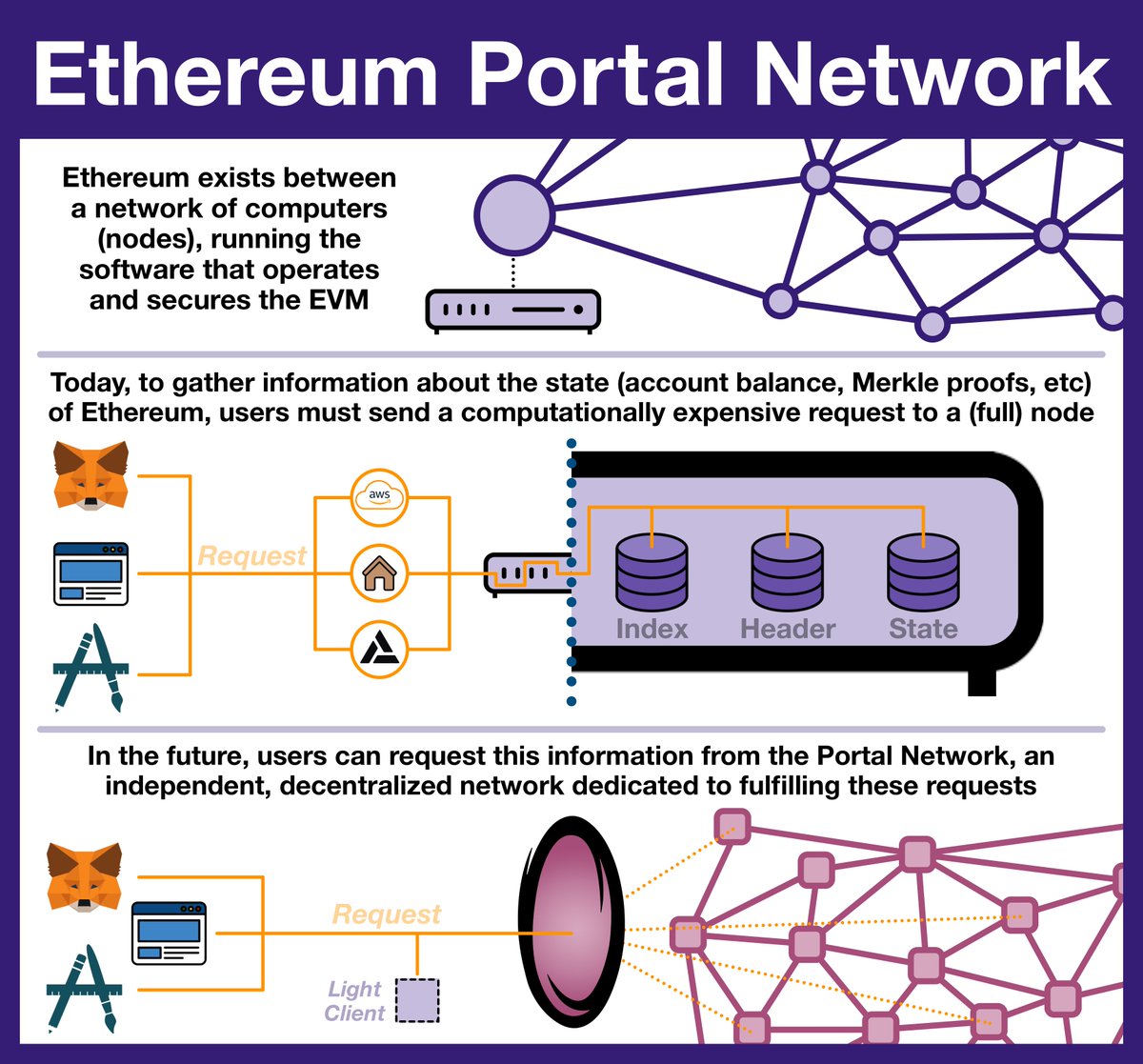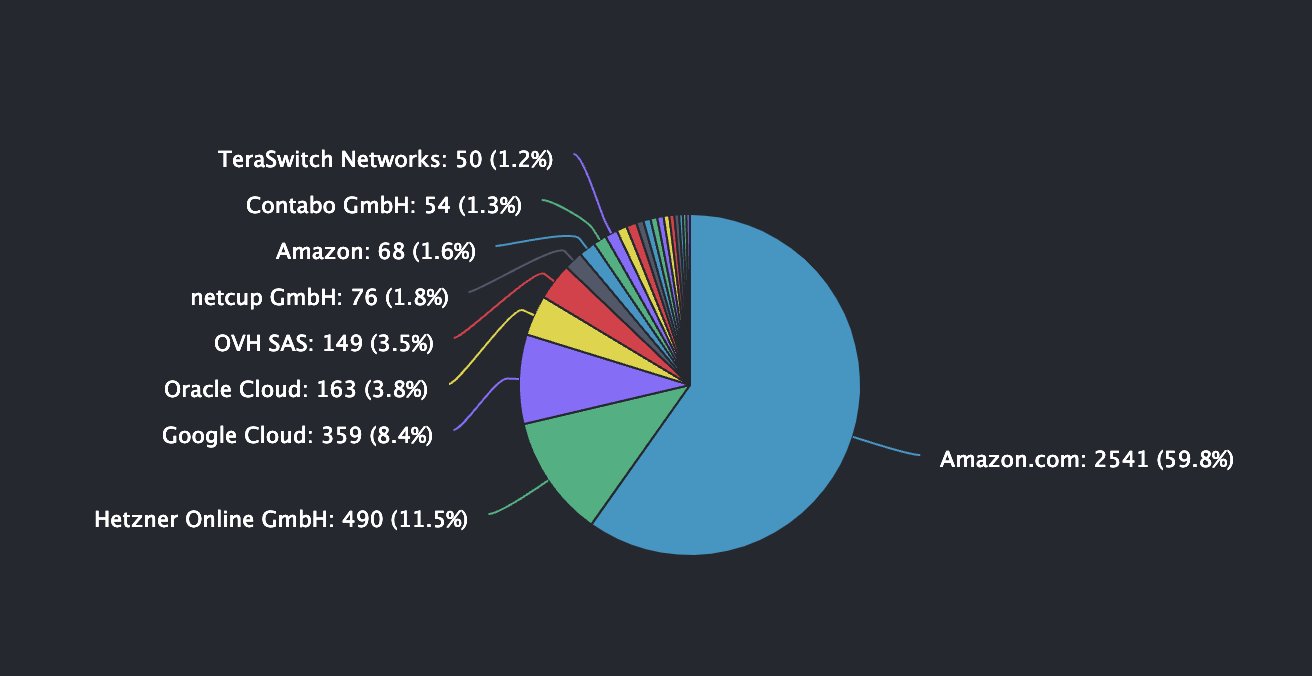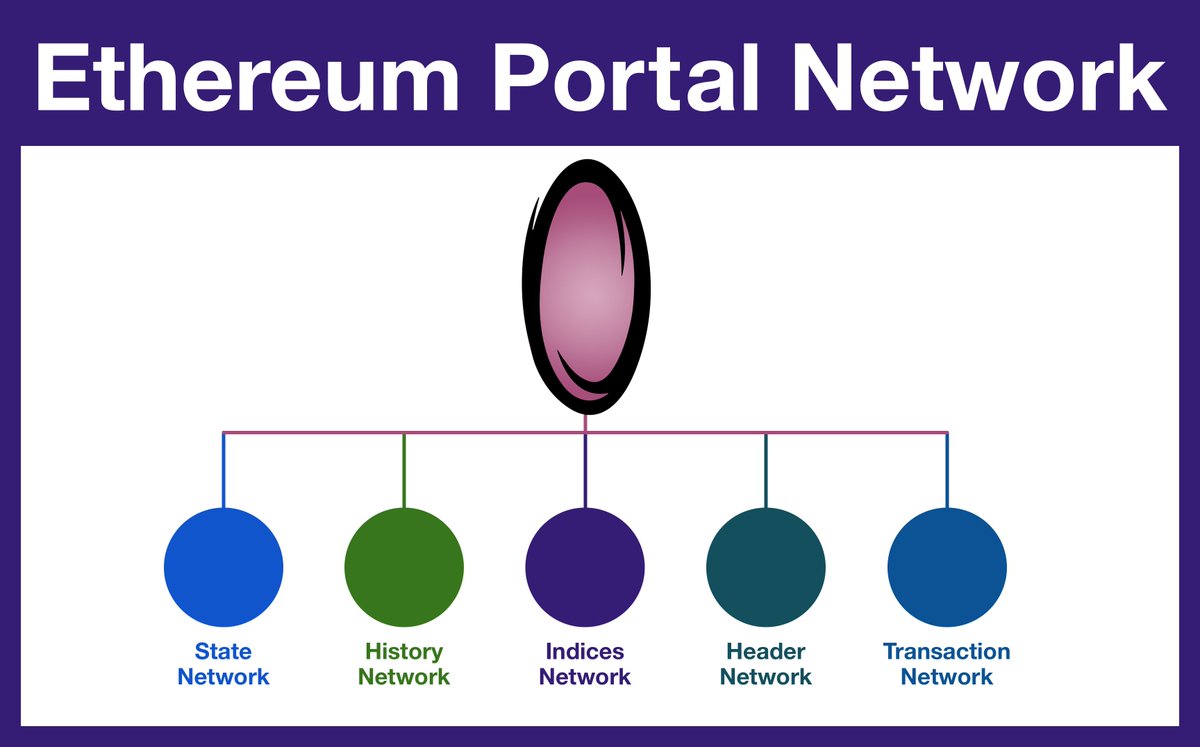
¶ Light Clients and the Portal Network
¶ The World Computer
Ethereum is the World Computer, a network of 1,000s of computers (nodes) coordinating using Proof of Stake (PoS) to keep the Ethereum Virtual Machine (EVM) in sync.
The EVM is the shared computing platform, the blockchain its history and ETH its lifeblood.
This "network of nodes" is the foundation upon which Ethereum ultimately derives its value. The more decentralized, the more value.
From decentralization comes credible neutrality.
Without credible neutrality, we might as well be using FB-dollaroos in Farmville-DeFi.
¶ Accessing Ethereum
There are currently ~10k nodes. So you can think of this as ~10k individual computers running Ethereum clients.
If you want to be specific, you need to look at cloud providers. More than 25% of nodes run on AWS, which makes decentralization more complicated.
 |
 |
Not all nodes are made the same.
While there have been valiant efforts to get a node running on some very humble hardware, in general a node ranges from a $1k+ dedicated computer to a full data center.
And all nodes require unlimited bandwidth and constant maintenance.
Today, to access Ethereum, the choice is to run a node yourself (less than 10k people globally), or to use a centralized platform like Alchemy or Infura.
¶ Emerging Centralization
Users send requests & transactions over an internet API; these platforms execute them on their behalf.
These Nodes-as-a-Service platforms are great tools that have (and will continue to) provide incalculable value to the Ethereum ecosystem. Without them, the vibrant ecosystem we have today would not be possible.
But they are inherently centralizing.
What's the point of decentralizing Ethereum if the vast majority of people access it through one or two centralized entities?
It is trivially easy for a government to affect a corporation.
Ethereum isn't credibly neutral if the only two gateways can be compromised.
Today, you can only access Ethereum via a node, but in the future you will be able to use a light client.
¶ Light Clients
A light client (currently theoretical) can directly and trustlessly interact with Ethereum without having access to a full node.
Statelessness is an important milestone on the way to light client support.
Ethereum must be able to support access to the EVM state without actually running the (extremely heavy duty) software before a light client is realistic.
While statelessness is a big, important step towards light clients, it doesn't get us all the way there.
¶ Light Ethereum Subprotocol
The problem is actually pretty subtle, and only really came apparent during the previous attempt at light client support: Light Ethereum Subprotocol (LES).
Tl;dr LES allowed light clients to request Merkle proofs and other data needed to trustlessly interact with Ethereum from a full node.
A light client could ask "what is Alice's balance" and the node would reply with cryptographic proof.
But operating Ethereum is already a difficult task. LES drastically increases both the computational and bandwidth demands on these nodes.
Light clients are supposed to support decentralization, LES just increases node costs thereby decreasing decentralization.
As Piper Merriam said, the LES nodes that are out there are being run "by the goodness of hobbyists' hearts... or people who misconfigured their client on accident."
¶ The Portal Network

But don't worry, the LES lesson was learned, and Piper and his team have got the solution.
In the future, your in-browser wallet, cell phone, ANYTHING will be able to trustlessly interact with Ethereum.
In order to access Ethereum they will turn to the Portal Network.
The Portal Network is a group of networks that are dedicated servicing Ethereum light clients.
Nodes in the Portal Network opt in to the specific networks they want to support with whatever resources they have available.
The ethos of the Portal Network is "contribute what you can." No participant is too modest, no computer to slow.
Each operator can subscribe to the networks they want to support and, once subscribed, can tune the amount they are willing to store/process.
The idea is very similar to BitTorrent.
The key takeaway: the more network participants, the stronger the network becomes, both in terms of available storage capacity and ability to process requests.
¶ A Light Client Future
Let's say you want to make a swap on Uniswap.
Today, your wallet will connect with Infura, gather the information it needs to craft a transaction and then send back a signed transaction.
In the future, your wallet will query ~4 Portal Network networks.
- First, your wallet will send a request to the Header Network to get the latest header and get the current state of the EVM.
- Next, it will access the State Network to build a transaction.
- Once built and signed, it will broadcast it to the Transaction Network.
Think of the Transaction Network like the mempool, the place where pending transactions wait to be executed.
In order to process the mempool, a node must be able to handle the entire (HUGE) mempool.
The Transaction Network allows much more broad participation.
Once broadcast to the Transaction Network, the light client will subscribe to the History Network and look for the transaction it submitted.
All of these steps come with cryptographic proof, so the light client can verify each step without trusting anyone.
¶ Looking Forward
Today, the Portal Network is a research project.
In a nod to the principles of Ethereum, 3 independent teams are building clients to support it.
Together with statelessness, the Portal Network makes Ethereum light clients entirely possible.
And while this is incredibly cool for decentralization and trustless access, light clients are so much bigger.
Light clients are THE step-change.
Light clients + middleware = the World Computer
¶ Resources
Source Material - Twitter Link
Source Material - PDF